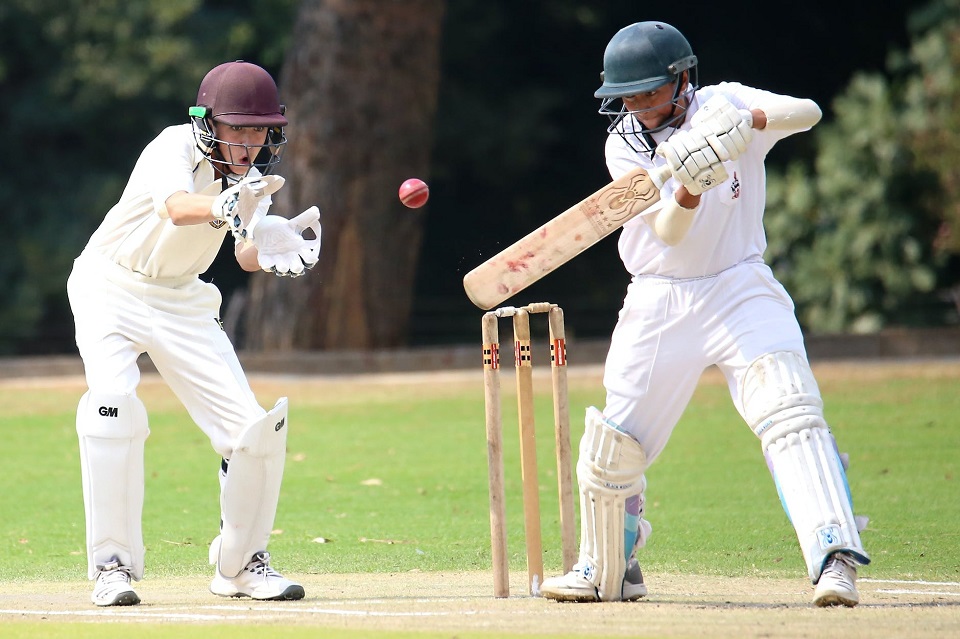A fundamental skill for any batter is the art of concentration
Peter Procopis | May 27, 2023

Faster improvement- why wait?
“Oh, mate, talk about frustrating… he threw it away again. Looked great for 80 minutes…then, all of a sudden, he ran at the leggie like a madman and tried to hit him into the next suburb. Missed it by a foot. Another big score gone begging. Bloody young guys…just don’t want it enough.”
I bet many of you have heard something like this from a Coach, official or senior player over the years- probably on multiple occasions. It’s the classic lament about the inability of promising youngsters to convert 20s and 30s into 70s and 100s. This age-old phenomenon is very frustrating not only for those watching young batsmen’s often chaotic downfalls, but also the youngsters themselves. They’re usually at a loss when asked what, if anything, triggered the brain explosion.
A provocation: perhaps we ought to pause for a moment to analyse whether it’s logical and reasonable to expect young batsmen to effectively concentrate for three to five hours with very little, often no training in the skills required?
By their very nature, youngsters have only played a smidgeon of the cricket played by seasoned, senior cricketers. Many are cognitively cooked after 60-100 minutes of batting. They haven’t yet developed that cyclical concentration technique that experienced, skilful players possess. Variations of that technique enable skilled, experienced batsmen to conserve energy and continue to make good decisions for many hours on end. Unless the up-and-comers purposefully practise those skills, they will likely only develop them at what may be clunkily termed ‘standard developmental points.’ They’ll get there, but not until they’ve done their time- unnecessary time I contend.
The easy option for Coaches in this space is to pull out the old chestnut: “The game is the greatest teacher. Just give it time. They all need to make mistakes and over time they will learn.” Whilst there is plenty of value in this sentiment, a Coach’s raison d’etre must be to seek the fastest improvement possible in their players’ games. To do that, Coaches must necessarily create opportunities at training sessions for players to acquire effective concentration skills, just as they would provide opportunities to better develop their skills against spin or their forward defence.
Most Grade Clubs use a net facility that has 4-8 lanes. Bowlers come and go, usually completing a couple of spells of four or five overs broken up by their batting session. The batsmen usually face bowlers for 15-20 minutes. Typically, they rotate through two or three nets against bowlers playing similar grades. Bowlers look to create some rhythm, build confidence in their control, and perhaps work on a couple of technical parts of their action. Similarly, batsmen maintain their feel for their craft by watching bowlers run in, practising watching the ball well, and trying to find the middle of the bat. The more strategic may also work on a couple of specific things in a ‘batting’ net afterwards.
That all sounds pretty good, doesn’t it? Bowlers bowling; batsmen batting- both groups working on a few things here and there. It sounds like a recipe for steady improvement; a ritual that helps players prepare for matches and improve their games. And yes, players will improve if they participate in those sessions once or twice a week.
Coaches and players, however, shouldn’t simply be asking whether their sessions promote improvement, but rather whether they promote the fastest improvement possible? Are their sessions providing players with opportunities to learn by the age of 21 what they may otherwise learn by the age of 25? Do they present players with the type of problems they encounter in matches? Are there design features within the sessions that promote performance in the cauldron of competition?
What follows are a few ideas Coaches might consider when designing their training sessions.
In senior cricket, a ball is bowled every 15-45 seconds. A tall, dart-throwing Left-Arm Orthodox might send one down every 15 seconds, whereas a big quick with a 35m run-up might be closer to the 45 second mark. This makes batting necessarily a stop-start affair. Consequently, one of the fundamental skills a batsman must possess is an ability to cycle through a process of concentration that involves cognitive troughs, valleys, hills and peaks. Batsmen must be able to recover, reflect, relax, re-focus, react, repeat. To score centuries and be matchwinners they need to be able to do that effectively for over four hours.
There is an interesting parallel in golf. To put together a strong performance across an 18-hole round, players must concentrate effectively for somewhere between four and five hours- roughly the same time required to score a century in good quality, senior, red-ball cricket. Like cricket, golf is very much a stop-start affair insofar as focus or concentration is concerned. On average an 18 handicapper plays a shot every three minutes. Consequently, like batsmen, golfers must be able to cycle through different levels of intensity and focus throughout a round of golf. They need to be completely immersed in the task at hand immediately prior to and when playing a shot, while also relaxing and reflecting in between.
Knowledge of that requirement, is why more experienced, skilful golfers usually take much longer to hit a bucket of balls at the driving range than inexperienced, less skilful golfers. Strong amateur golfers and professionals know that for them to improve their performance, the mental and physical challenges created in their practise sessions must resemble, if not replicate those faced in competition. Consequently, due to the consideration, deliberation and ongoing reflection required to put together a more meaningful, ‘transferable’ practise session, they will typically take two to three times longer than inexperienced and average amateurs to hit the same number of balls at the range.
The more skilled and experienced players will settle on a plan for each shot, go through their routine, and commit to the shot. Post-strike they will reflect, relax and take some time before beginning preparations for the next shot. Sometimes, they will even use their imagination or a technological aid to ‘play’ a Course they know, working their way ‘up and down the bag’ using the same clubs they would normally need on that Course for each shot.
Many amateur golfers, on the other hand, will purchase 50 or 100 balls at the range and hit them all rapid-fire within 20-40 minutes. At times these sessions look more like a muscular endurance activity than a focussed attempt to shave strokes off their weekend scores. They might be averaging a shot every 25 seconds, as opposed to the more skilful, experienced players who will typically average closer to 75 seconds per ball. The rapid-fire range players are often confused as to why they can hit 40 out of their 50 mid-iron shots solid on the range on a Tuesday but only hit 5 out of their 15 well on Saturday in competition.
Of course, on the range, during those rapid-fire sessions, they are not required to exercise deliberate control of their focus in a competitive environment. Unlike when they play a round on the golf course, there are no real consequences for failure and no enforced ‘thinking’ time. Most reasonably well-coordinated amateur golfers can find physical rhythm and consistency when hitting golf balls in a continuous, rapid-fire manner on the range. The problem, of course, is that real golf on a Course in competition is nothing like that. That’s why the stronger amateurs and professionals seek to impose a discipline on their range sessions by slowing things up; working on their routine and mindset; and setting up some type of competitive challenge that gets closer to what they face on the golf course in competition.
Like golf practise sessions, cricket trainings should be designed to enable batsmen to explore their concentration processes. Batsmen should get regular opportunities to practise cycling through the ‘game-on’, sharply-focussed sections of batting like the delivery stride and release, as well as the ‘down time’, idling sections like in between balls or a drinks-break. The ubiquitous rapid-fire net sessions in which batsmen finish playing a shot, look-up and find another bowler immediately on his way in are very different to the actual requirements of batting in matches. Often at trainings, batting is continuous and somewhat aimless, whereas in competitive cricket it is stop-start and frequently requires consideration and deliberation.
It’s exciting to contemplate how much faster batsmen’s performances could improve if training sessions gave concentration skills the status they deserve? Coaches should consider this challenge when designing sessions. They should consider setting up competitive challenges at training that enable batsmen to practise solving problems while developing their personalised concentration methods. Why wait around for “the game to teach them” by the standard points on the timeline? Instead, let’s explore ways to accelerate the acquisition of those concentration skills so vital to peak performance.








